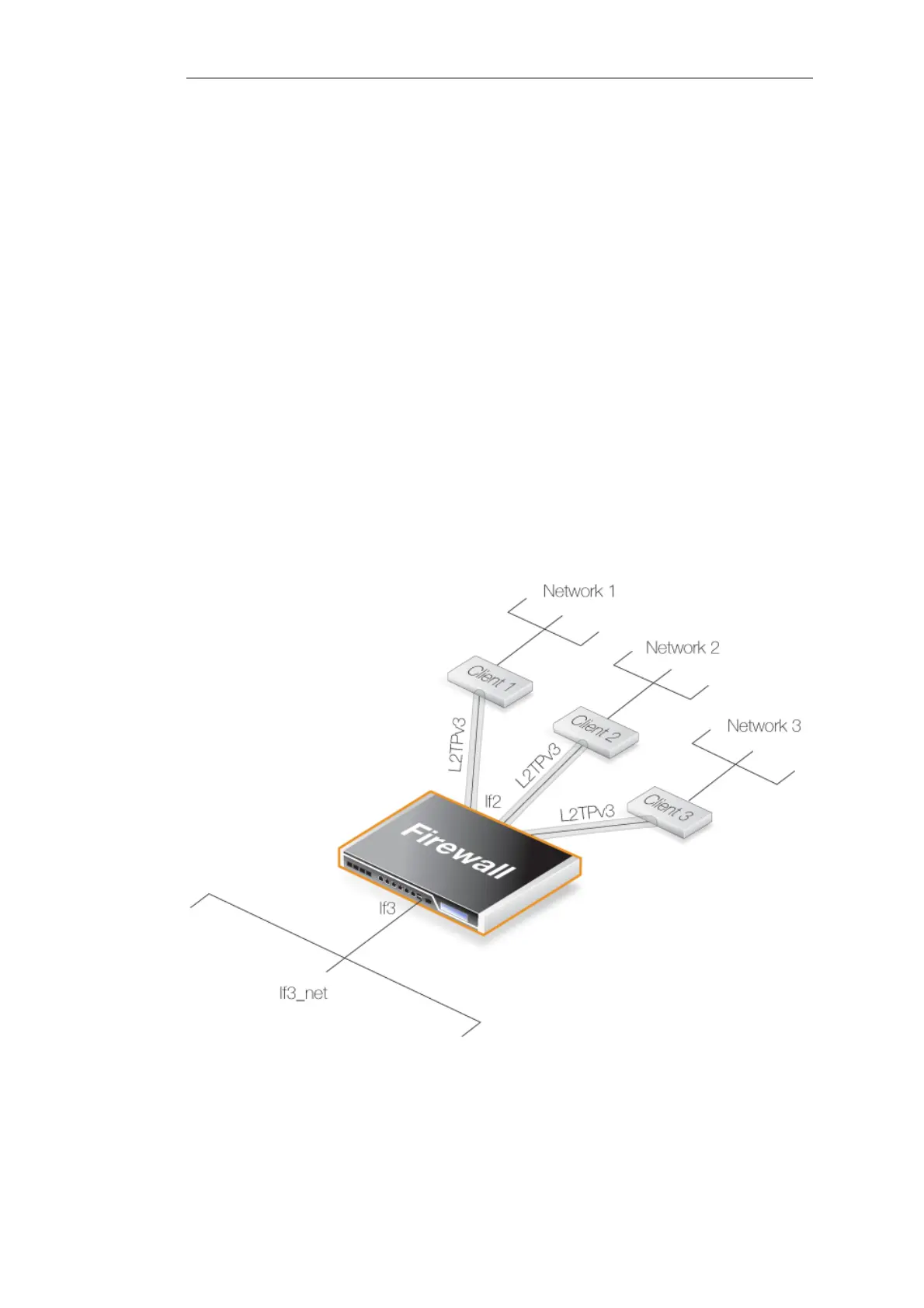ii. Inner IP Address - Set this to any IPv4 address within the network used for the Local
Network property. As a convention, it is recommended to use the IPv4 address of the
physical interface connected to the protected network.
iii. Outer Interface Filter - Set this to be the listening interface for L2TPv3 client
connections. Without IPsec, this is set to a physical Ethernet interface. When using IPsec
for encryption, this is set to the IPsec tunnel object.
iv. Server IP - Set this to be the IP address of the listening interface.
B. Enable transparent mode for the protected interface.
Change the properties of the Ethernet interface connected to the protected network so that
Transparent Mode is enabled.
C. Set any required L2TPv3 Server advanced options.
Some L2TPv3 clients may require the setting of the option Host Name or Router ID for the
server object. If the Host Name is set to None, the tunnel's Inner IP Address is used for this
setting.
The illustration below shows a typical setup for L2TPv3 where the protected network on
interface If3 can be accessed by L2TPv3 clients connecting to the L2TPv3 server listening on the
interface If2.
Figure 9.4. An L2TPv3 Example
Setting up the above scenario is covered in the example below.
Chapter 9: VPN
742

